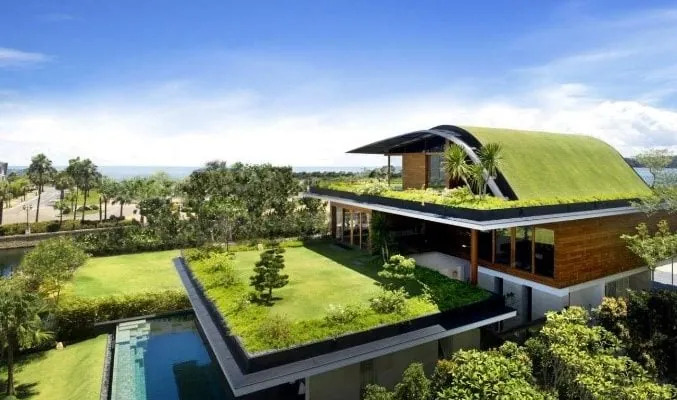
Green Roof Guide: An Eco-Friendly Guide
Leaving a legacy is the most fulfilling thing a construction firm can accomplish. If the city is better, more attractive, and more sustainable long after we are all gone, then we have done our jobs well. We will have made a lasting impact on the land and its inhabitants if we can positively impact the lives of future occupants. By utilizing sustainable technologies and collaborating with local governments, construction enterprises are changing the aesthetic and cultural landscapes of their surroundings.
Describe a green roof.
Traditional roofs lose a great deal of energy. All day long, heat strikes your roof before radiating off and disappearing. Rain also contributes to waste since it flows off hard surfaces. The purpose of green roofs is to address these issues. Known as a "cool roof," the style has gained popularity in Europe and is beginning to spread around the world. It is a great use of space and provides substantial environmental, economic, and social benefits in addition to being aesthetically pleasing.
What Advantages Do Green Roofs Offer?
By giving your building natural insulation and absorbing storm water, green roofs lower energy costs and ease the strain on drainage systems. Green roofs may cost more up front than traditional roofs, but they will save you money over time. Crucially, green roofs have a twofold longer lifespan than traditional roofs. The cost will decrease as green roofs gain popularity, and adoption is probably going to rise.The ability of green roofs to lessen the urban heat island effect is an additional advantage. Urban regions' dense populations and buildings produce microclimates that are more vulnerable to natural disasters, have much higher temperatures, and receive less rainfall.
According to studies, Melbourne's central business district has average temperatures that are more than 4 degrees warmer than those of nearby suburbs, and during the summer, they can rise as much as 12 degrees. This is especially crucial given that there are over 200 heat-related fatalities in Melbourne annually. Green roofs mitigate this by absorbing heat.Green roofs are at the forefront of many authorities' attempts to battle increasing temperatures since they absorb heat and lessen this effect.
Which Green Roof Types Exist?
Green roofs come in two primary varieties: extensive and intensive.Intensive green roofs, which are practically parks above buildings, are clearly more appropriate for commercial buildings. Trees, plants, seats, paths, and even sports grounds may be present. This is made feasible by intricate layers of drainage, irrigation, root protection, and structural support that are all supported by a waterproof covering. These layers may therefore be hefty, necessitating more robust structural support.
However, large green roofs are not able to hold the same level of structures because they are relatively light. Rather of being accessible rooftop gardens, they typically include low-maintenance natural ground cover that serves more as an environmental benefit. One effective strategy to guarantee the sustainability of our cities in the future is the installation of green roofs. In addition to greatly lowering energy usage and mitigating the urban heat island effect, they are crucial tools for insulation, heat absorption, and water absorption.

Comments 0